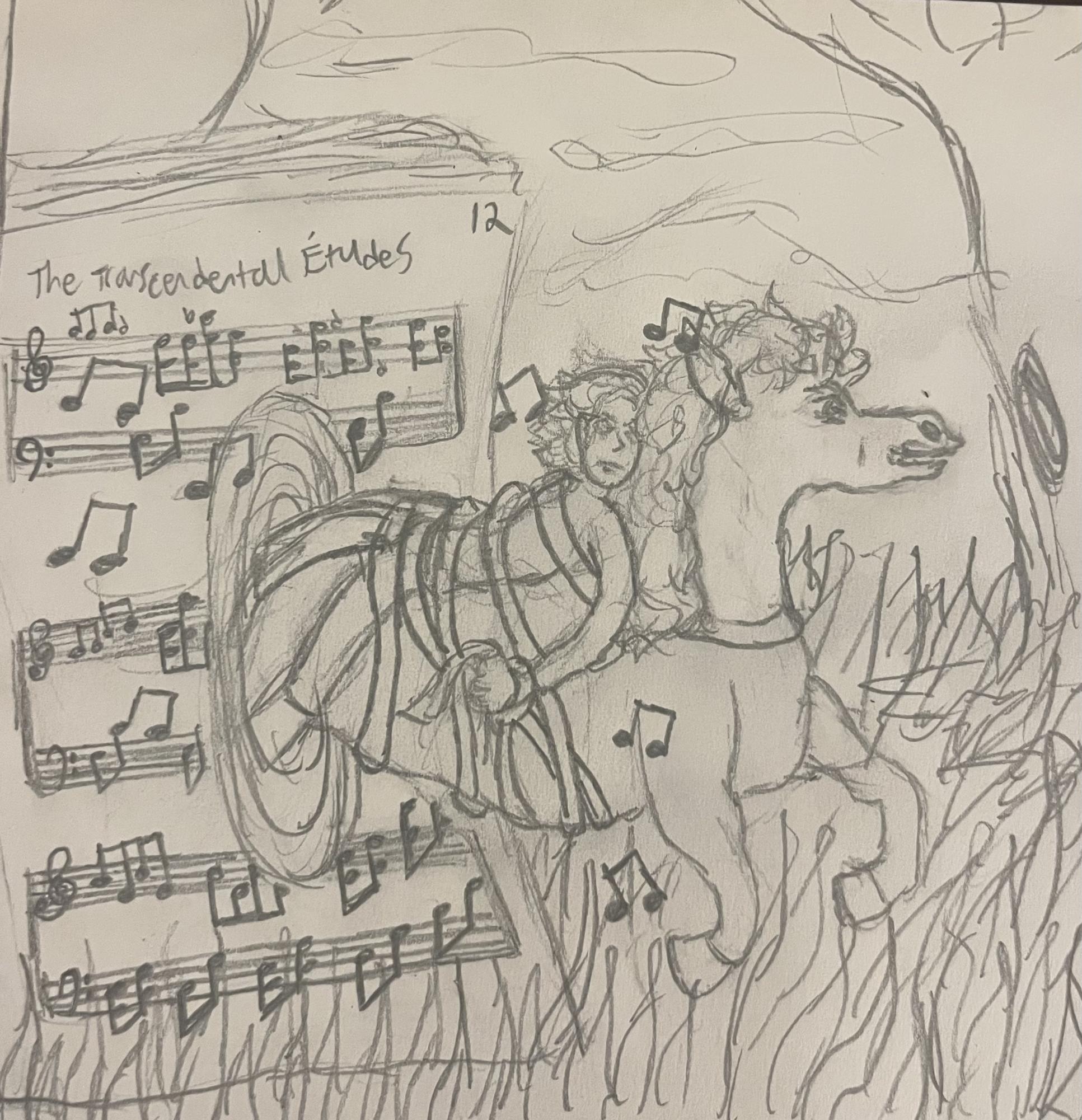Franz Liszt, one of the most influential figures in Romantic music, continues to captivate listeners with his virtuoso piano works. His compositions, known for their technical brilliance and extensive emotional depth, are regularly performed and still receive widespread acclaim today. Among his most iconic works is Mazeppa, the fourth of his Transcendental Études. Prominent performances of this piece have been delivered by South Korean pianist Yunchan Lim in 2022 and Russian pianist Daniil Trifonov in 2014. Both pianists performed not just Mazeppa but the entire Transcendental Études, a remarkable accomplishment. This article delves into the history and message of Mazeppa, exploring its origins and thematic content.
To begin with, what are the Transcendental Études? The Transcendental Études (S. 139) are a set of 12 piano pieces, including Mazeppa, that Liszt published in 1852, covering a wide range of dextrous techniques. They are called transcendental due to their artistic quality: These pieces transcend their original purpose as technical exercises to explore more poetic and visionary concepts. They originate from the Études en douze exercices (S. 136), or Study in twelve exercises, which Liszt published in 1826. These compositions, despite corresponding with their Transcendental Études counterparts, were easier and meant to challenge less experienced pianists: Their technical demands were simpler than those of the Transcendental Études. In 1837, Liszt reworked these compositions into a revised version. This new iteration, known as the Douze Grandes Études (S. 137) or the Twelve Great Studies, greatly elaborated on the original Études to create a more virtuosic set. Finally, he published the Transcendental Études (S. 139), simplifying and reducing the Douze Grandes Études so that pianists with smaller hands could perform them. In contrast, Mazeppa stands out as a more technically demanding piece than its Douze Grandes Études counterpart, defying the trend of simplification. Liszt dedicated the Transcendental Études as a whole to his teacher, Carl Czerny, a prolific composer who published numerous Études.
Mazeppa is based on Victor Hugo’s poem “Mazeppa,” which is part of his work Les Orientales, a collection of poems published in 1829. Victor Hugo based “Mazeppa” on the story of Ivan Mazeppa, a Ukrainian historical figure, and his affair with a married Polish countess. When her husband finds out, he binds Mazeppa naked to a horse and sends it loose on the wilderness of the Ukrainian steppes. The poem is divided into two parts—the first half describes Mazeppa riding to his likely death on the horse, and the second half depicts his spiritual resurrection. “Mazeppa” can thus be considered a parable for the struggles of the creative process, highlighting the artist’s transformative journey of self-discovery and growth through struggle.
The story of “Mazeppa” became influential in the Romantic world of art, resonating not only with Liszt, but other Romantic figures as well, such as French Romantic artist Horace Vernet, who created a painting of “Mazeppa” in 1826.
Liszt’s Mazeppa—described as one of the juggernauts of the 12 Transcendental Études—mirrors Hugo’s poem both thematically and structurally, from the chaotic galloping of the horse to the eventual resurrection. It begins with a rapid tempo, evoking the fierce and wild galloping of the horse. The finger order of this phrase presents a significant change, utilizing the ring (4) and pointer (2) fingers to achieve a distinct sound, thus creating the distinct image of the galloping horse. While it may seem counterproductive compared to the smoother connection created by utilizing the middle (3) and index (1) fingers, the choice is intentional. Utilizing just the 4 and 2 produces a separate, short, and disconnected sound, thus mirroring the sound of the horse’s hooves. In the second section, the piece slows down, as if the horse is slowing down and perhaps giving in to exhaustion. This can be interpreted as a moment of introspection, symbolizing the artist’s self-reflection as they face issues in their life. In the third section, the galloping of the horse returns—this time at an insatiable speed. This represents the artist, now armed with lessons they learned from past experiences and more knowledge of themselves, charging at their issues, regardless of if they seem even more frightening than ever before. The piece then transitions into a triumphant coda with a brilliant and virtuosic climax. It concludes the piece with grandeur, mirroring the poem’s last line of “when comes the time, after the fall he rises—King!” and highlighting the sense of accomplishment the artist feels after facing and overcoming struggles in their life, triumphant against all odds.
To an artist, the period of growth that follows introspection is a time of learning valuable lessons that shape both their life and their art. This growth leads to a deeper appreciation, greater impact, and a stronger resonance with outside observers, who are inspired to express this message through their own unique form of art.
But why should HSMSE students care about something as ancient as classical music today? Mazeppa’s story, told through the many forms of art, is a testament to the Romantic emphasis on expression, struggle, and triumph. They provide a unique lens in which one can witness artistic and emotional expression: universal and timeless concepts that remain relevant even today. Mazeppa also serves as a powerful example of how art can communicate profound and meaningful messages to a broad audience, with the potential to be expressed in various art forms, thereby amplifying the impact of the message. Just as Victor Hugo’s writings explore the themes of endurance and resilience, Liszt’s Mazeppa uses the power of music to transcend boundaries and convey deep and meaningful messages.
Mazeppa’s journey mirrors our own growth. Just as the artist’s struggles lead to greater self-awareness and artistic mastery, we, too, face challenges in our personal and academic lives. By confronting adversity head-on, we build resilience and emerge stronger and wiser, ready to face whatever comes next in the journey of life. In this way, Liszt’s Mazeppa not only captivates the listener but also inspires us to confront our struggles and rise triumphantly from them.


